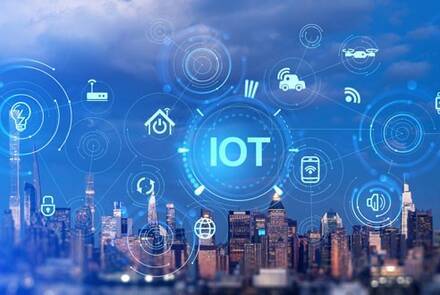The Impact of 5G on Digital Transformation
The emergence of 5G technology stands as a transformative force, accelerating the pace of digital transformation across various sectors. Offering unprecedented speed, low latency, and enhanced connectivity, 5G is enabling new possibilities for industries, enterprises, and consumers alike. This article delves into how the rollout of 5G networks is fueling digital transformation efforts, revolutionizing connectivity, and setting the stage for innovation in ways previously unimaginable.
Enhanced Connectivity and Speed
Ultra-Fast Network Speeds. One of the most significant advantages of 5G is its ability to deliver exponentially faster data transfer speeds compared to 4G. With speeds up to 100 times faster, 5G enables activities such as streaming high-definition videos, downloading large files, and running data-intensive applications with ease. This increased speed allows organizations to access and process vast amounts of data in real-time, unlocking opportunities for advanced data analytics, AI-driven solutions, and enhanced customer experiences.
Low Latency and Real-Time Connectivity. Latency, the time it takes for data to travel from one point to another, is dramatically reduced with 5G. In applications requiring real-time responsiveness, such as video conferencing, online gaming, or autonomous vehicle operations, even a few milliseconds of delay can significantly affect performance. 5G’s ultra-low latency supports near-instantaneous communication, creating a seamless user experience and unlocking the potential for real-time services like telemedicine, augmented reality (AR), and virtual reality (VR).
IoT and Smart Devices: Driving the Future
IoT Proliferation and Efficiency. 5G’s ability to connect a massive number of devices simultaneously is a key enabler of the Internet of Things (IoT). This increased capacity is driving the rapid expansion of IoT in various industries, from smart homes to industrial IoT applications. In sectors such as manufacturing, agriculture, and transportation, the low-latency, high-bandwidth capabilities of 5G are essential for enabling automation, remote monitoring, and seamless device communication. For example, in smart cities, connected infrastructure can optimize traffic management, reduce energy consumption, and improve public services.
Real-Time Data Analytics. The speed and bandwidth of 5G allow IoT devices to transmit data in real-time, opening the door to instant analysis and decision-making. In fields like predictive maintenance, sensors embedded in machinery can continuously monitor performance, alerting operators to potential failures before they happen. Similarly, in healthcare, real-time data from wearable devices can be analyzed instantly, allowing healthcare providers to make critical decisions based on live patient data.
Transformative Industries: The 5G Revolution
Manufacturing and Industry 4.0. 5G is driving the next wave of industrial transformation, often referred to as Industry 4.0. In smart factories, 5G-powered automation enables the seamless integration of robotics, AI, and machine learning. Predictive maintenance, where machines can self-diagnose issues before they cause disruptions, becomes more efficient, reducing downtime and operational costs. Additionally, real-time monitoring and control allow manufacturers to optimize production processes, improve quality control, and create more flexible manufacturing systems.
Healthcare and Telemedicine. In healthcare, the introduction of 5G has paved the way for advancements that were previously thought to be years away. High-quality video streaming, enabled by 5G, allows for real-time telemedicine consultations, making healthcare more accessible, especially in remote areas. 5G also supports remote surgeries, where a surgeon can operate on a patient from thousands of miles away using robotic tools, all controlled in real-time. Remote patient monitoring is another area where 5G shines, as real-time data transmission allows for continuous patient care and more accurate diagnostics.
Edge Computing and Cloud Services: A Symbiotic Relationship
Edge Computing Advancements. As the volume of data being generated by IoT devices and digital services increases, the demand for faster processing closer to the data source grows. This is where edge computing, combined with 5G, comes into play. By reducing the need to send data back to a central cloud for processing, edge computing reduces latency and enhances the efficiency of data-intensive applications. With 5G, edge computing can be deployed at scale, empowering industries like retail, transportation, and healthcare to optimize real-time data processing.
Cloud Services Optimization. The synergy between 5G and cloud computing is reshaping how businesses operate. With the low-latency, high-speed connections provided by 5G, cloud services can operate more efficiently, providing faster access to applications, data, and resources. This is particularly important for enterprises running mission-critical applications that rely on cloud infrastructure. The enhanced connectivity of 5G allows for more reliable and robust cloud-based solutions, enabling businesses to scale more quickly and offer more responsive digital services.
Autonomous Vehicles and Transportation: Driving the Future of Mobility
Vehicular Connectivity and Safety. 5G is revolutionizing the transportation industry by enabling vehicle-to-everything (V2X) communication. Autonomous vehicles, for example, rely on real-time data exchange with other vehicles, infrastructure, and even pedestrians to navigate safely and efficiently. This level of connectivity can drastically reduce the likelihood of accidents, optimize traffic flow, and improve overall road safety. In addition, 5G allows for constant monitoring of vehicle performance, which can enhance preventive maintenance and reduce breakdowns.
Logistics and Fleet Management. In the logistics industry, 5G is enabling more efficient fleet management by providing real-time tracking and data analytics for large fleets of vehicles. This allows logistics companies to optimize delivery routes, reduce fuel consumption, and enhance the overall efficiency of operations. By leveraging the real-time data provided by 5G, fleet managers can also respond more quickly to changing conditions, such as traffic jams or mechanical issues, improving delivery times and reducing operational costs.
Challenges and Future Developments: Navigating the Road Ahead
Infrastructure Investment. While the potential of 5G is immense, its widespread adoption requires substantial infrastructure investment. Building the necessary network of 5G towers and base stations, particularly in rural or underserved areas, presents logistical and financial challenges. Governments and private companies will need to collaborate to ensure that 5G coverage is both broad and reliable, allowing all regions to benefit from its capabilities.
Security and Privacy Concerns. As with any advancement in technology, the proliferation of 5G introduces new security challenges. The sheer volume of devices connected through 5G networks creates more entry points for cyberattacks, making it essential to implement robust security measures. Protecting sensitive data, whether in healthcare, manufacturing, or transportation, will require ongoing vigilance and innovative security solutions to keep pace with evolving threats.
Conclusion
The rollout of 5G networks marks a monumental leap forward in digital transformation, unlocking new opportunities for innovation across industries. Its ultra-fast speeds, low latency, and enhanced connectivity are reshaping how businesses operate, how services are delivered, and how people interact with technology. From enabling the IoT revolution to transforming healthcare, manufacturing, and transportation, 5G is at the heart of the digital revolution.
As 5G continues to expand, it will catalyze advancements in automation, AI, and real-time data processing, fostering a more connected, efficient, and responsive world. The future of digital transformation is being shaped by the ongoing rollout of 5G, and its potential to revolutionize industries will only grow as the technology matures. The journey towards a fully interconnected, digitally optimized future has begun, and 5G is the driving force propelling us forward.
For more information about Trigyn’s Digital Transformation Services, Contact Us.






